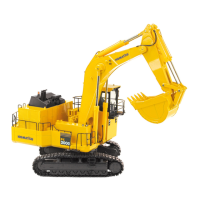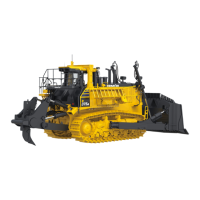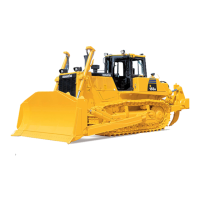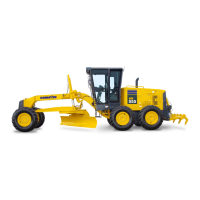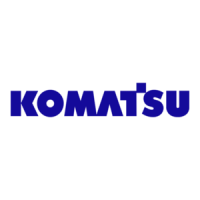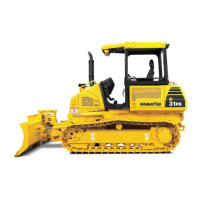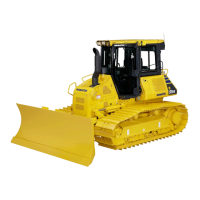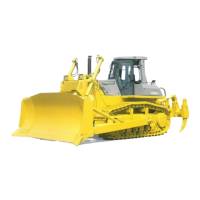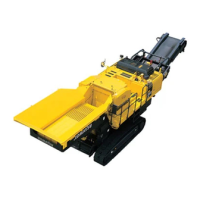3-6
18. OUTLINES OF SERVICE
18.1.2 FUEL
‡ To prevent the moisture in the air from condensing and forming water inside the fuel tank, always
fill the fuel tank after completing the day’s work.
‡ The fuel pump is a precision instrument, and if fuel containing water or dirt is used, it cannot work
properly.
‡ Be extremely careful not to let impurities get in when storing or adding fuel.
‡ Always use the fuel specified in the Operation and Maintenance Manual.
Fuel may congeal depending on the temperature when it is used (particularly in low temperatures
below –15°C (5°F)), so it is necessary to use the fuel that is suitable for the temperature.
‡ Before starting the engine, or when 10 minutes have passed after adding fuel, drain the sediment
and water from the fuel tank.
‡ If the engine runs out of fuel, or if the filters have been replaced, it is necessary to bleed the air from
the circuit.
‡ If there is any foreign material in the fuel tank, wash the tank and fuel system.
18.1.3 COOLANT AND WATER FOR DILUTION
‡ The coolant has the important function of preventing corrosion as well as preventing freezing.
Even in the areas where freezing is not an issue, the use of antifreeze coolant is essential.
Komatsu machines are supplied with Komatsu Supercoolant (AF-NAC). Komatsu Supercoolant (AF-
NAC) has excellent anticorrosion, antifreeze and cooling properties and can be used continuously
for 2 years or 4000 hours.
Komatsu Supercoolant (AF-NAC) is strongly recommended wherever available.
‡ When diluting the antifreeze coolant, use distilled water or tap water (soft water).
Natural water, such as a river water or well water (hard water), contains large amounts of minerals
(calcium, magnesium, etc.), and this makes it easier for scale to form inside the engine or radiator.
Once scale is deposited inside the engine or radiator, it is extremely difficult to remove. It also causes
overheating due to poor heat exchange, so when you dilute the coolant, we recommend that you
use water with an overall hardness of less than 100 PPM.
‡ When using antifreeze, always observe the precautions given in the Operation and Maintenance
Manual.
‡ Antifreeze coolant is flammable, so be sure to keep it away from flame.
‡ The ratio of Supercoolant (AF-NAC) to water differs according to the ambient temperature.
‡ For details of the ratio when mixing, see “24.2.2 CLEAN INSIDE OF COOLING SYSTEM”.
Supercoolant (AF-NAC) may be supplied already mixed. In such cases, never dilute with water.
‡ If the engine overheats, wait for the engine to cool before adding coolant.
‡ If the coolant level is low, it will cause overheating, and will also cause problems with corrosion due
to air entering the coolant.
18.1.4 GREASE
‡ Grease is used to prevent seizure and noises at the joints.
‡ This construction equipment is used under heavy-duty conditions. Always use the recommended
grease and follow the change intervals and recommended ambient temperatures given in this
Operation and Maintenance Manual.
‡ The nipples not included in the maintenance section are nipples for overhaul, so they do not need
grease.
If any part becomes stiff after being used for long time, add grease.
‡ Always wipe off all of the old grease that is pushed out when greasing.
Be particularly careful to wipe off the old grease in places where sand or dirt sticking in the grease
would cause wear of the rotating parts.
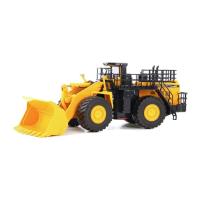
